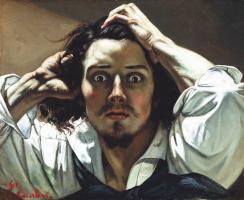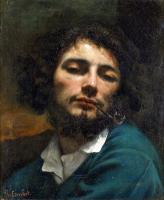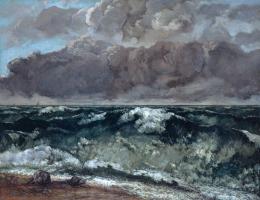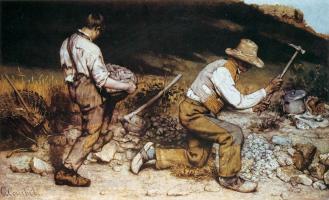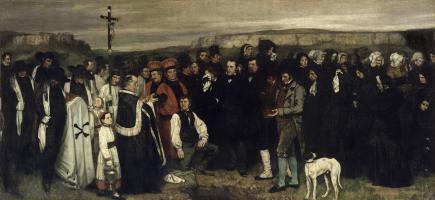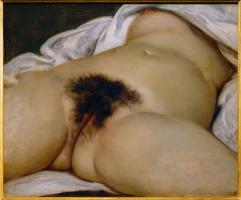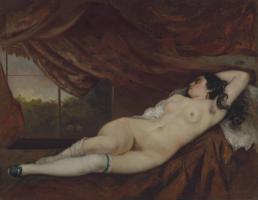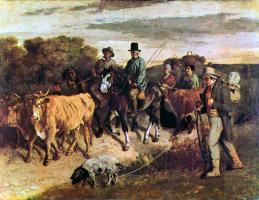Gustave Courbet
Gustave Courbet was the son of a substantial country farmer at Ornans, near the Swiss border of France. By 1839 he had moved to Paris, and taught himself to paint largely by copying the pictures in the Louvre.
He took his role as an artist very seriously, and felt it his duty to depict the world around him as it was, without idealizing it in the way that many artists had done in the past. He painted portraits, nudes, landscapes, and scenes from everyday life which sometimes reflected abject poverty in a way that caused discomfort and brought him harsh criticism. He was intensely vain, and quite often painted himself, romantically handsome, pipe-smoking, greeting a patron with supreme self-confidence, or waving at the sea from the shore, as though he, rather than nature, were the master of the waves.
Courbet reached his peak as a Realist painter in the 1850’s. Realism was regarded as dangerous by the French Academy who disliked anything painted in a spontaneous, uncontrived manner. In those days, Courbet’s battle for artistic freedom was totally consistent with his politics, which were socialist and anarchic. He fought any organization, having already grasped the implications of the shift from an agrarian to an industrialized society: ‘I must be free even of governments. The people have my sympathies, I must address them directly.’
Courbet took from the Romantic movement a feeling of tital emotional involvement, but he discarded the central role of the individual, believing the truth and dignity were located in the community and reality of everyday life.
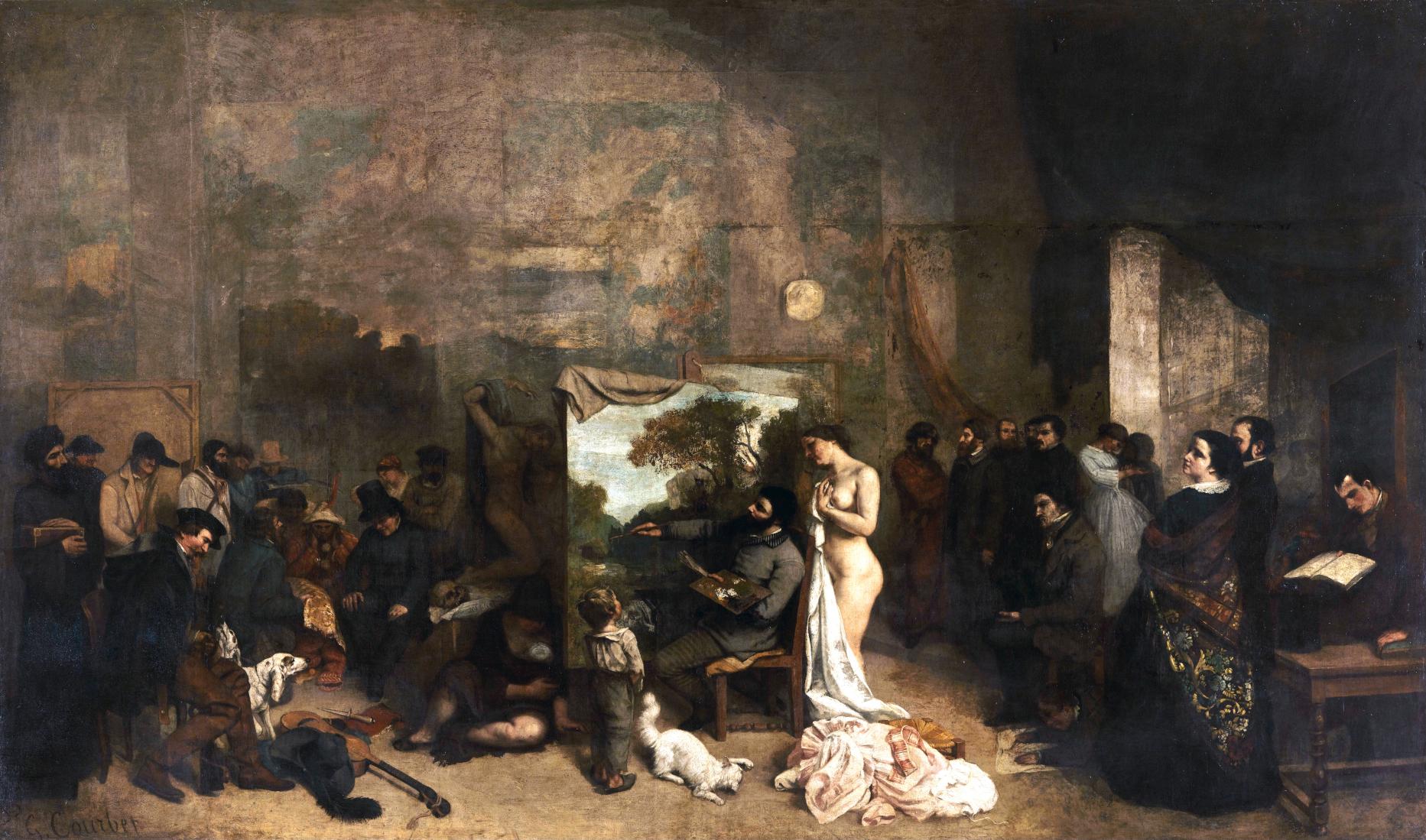 The Studio of the Painter has all the elements which typify Courbet’s work.
It is theatrical and flamboyant, and the life-size figures are painted with
tremendous vigour and energy. The artist himself dominates the composition. He
is seated at his easel in front of a huge landscape, in which the naked model
presumably will be included, and a small boy gazes up at him with rapt
attention.
The Studio of the Painter has all the elements which typify Courbet’s work.
It is theatrical and flamboyant, and the life-size figures are painted with
tremendous vigour and energy. The artist himself dominates the composition. He
is seated at his easel in front of a huge landscape, in which the naked model
presumably will be included, and a small boy gazes up at him with rapt
attention.
Courbet has filled the room with people who had some personal significance in his life. He has said that amongst the crowd are ‘A Jew I saw in England as he was making his way through the swarming traffic of the London streets… behind him is a self-satisfied cure with a red face… a huntsman, a reaper, a professional strong man, a clown, an Irish-woman suckling a child.’ There is a motley collection of people on the left, but most of them are probably Courbet’s models, and recently it has been shown that his words were partly a smoke-screen concealing friends from his childhood and people he admired. On the right is the philosopher Proudhon, the poet Baudelaire, his patron Alfred Bruyas, an art collector and his wife, and a fellow painter Champfleury.
The painting is highly personal and revolves around the painter’s work and the Bohemian world in which he lived. It was, in his own words, ‘a real allegory summing up seven years of my artistic and moral life’, and it is a work which people have been discussing ever since. It combines Courbet’s flair for unusual composition, rich colour and dramatic lights and darks, and reveals a great deal about himself and the world he inhabited.
When the jury for the 1855 Paris Universal Exhibition rejected The Studio of the Painter, people ridiculed him for having set up his own show in a ‘Pavilion of Realism’. However, one of his few supporters, Delacroix publically declared: ‘They have rejected one of the most outstanding paintings of the times.’
 One of three Realist pictures that made Courbet’s name at the 1850-51 Paris
Salon. The other two were The Stonebreakers, and his first monumental canvas,
A Burial at Ornans. All three paintings shocked the public because ordinary
villagers were presented in a style that ranked them with their ‘betters’.
Opinionated and provocative as ever, Courbet was putting art at the service of
social revolution.
One of three Realist pictures that made Courbet’s name at the 1850-51 Paris
Salon. The other two were The Stonebreakers, and his first monumental canvas,
A Burial at Ornans. All three paintings shocked the public because ordinary
villagers were presented in a style that ranked them with their ‘betters’.
Opinionated and provocative as ever, Courbet was putting art at the service of
social revolution.
By giving ‘things as they are’ the monumental treatment normally accorded to mythological or historical themes, Courbet set out to demolish the traditional hierarchies of subject matter and increase the emphasis on purely formal values. He felt the actual canvas and paint were as much his subject matter as the scene he depicted. Such ideas were well ahead of their time and Courbet’s declaration of creative independence opened the door for Manet and the Impressionists.

